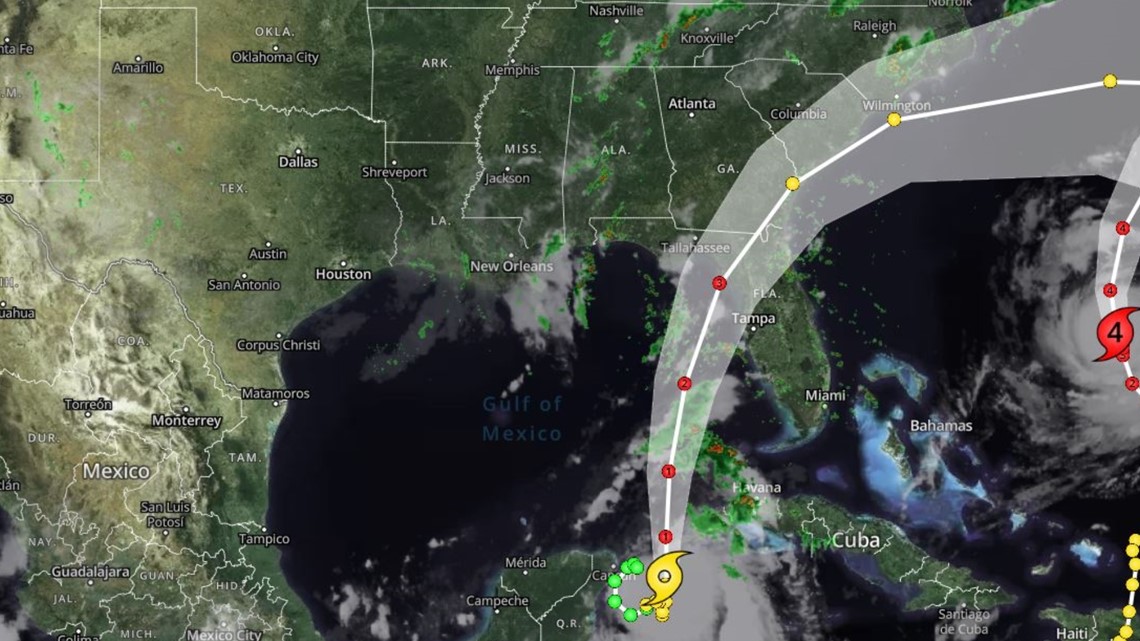Why Are European Power Prices Negative? The Impact Of Solar Energy

Table of Contents
The Phenomenon of Negative Electricity Prices in Europe
Negative electricity prices mean that the price of electricity on the wholesale market falls below zero. This seems illogical – why would anyone pay to get rid of something as valuable as electricity? However, this unusual situation arises when the supply of electricity significantly outstrips demand. This has occurred in several European countries, including Germany, France, and Denmark, particularly during periods of high solar irradiance.
- High solar energy production exceeding demand during peak sunlight hours: On sunny days, the massive influx of solar power into the grid can overwhelm demand, leading to a surplus of electricity.
- Insufficient grid infrastructure to store or redistribute surplus energy: Europe's electricity grids are not yet optimally designed to handle such massive fluctuations in renewable energy generation. The lack of adequate energy storage solutions means the surplus cannot be easily saved for later use.
- Limitations of conventional power plants' ability to quickly adjust output: Traditional power plants, such as coal and gas-fired plants, cannot quickly reduce their output to match the fluctuating supply from solar power. This inflexibility exacerbates the oversupply problem.
The Role of Solar Energy in Creating Negative Power Prices
The rapid expansion of solar energy capacity across Europe is a key driver of negative electricity prices. The increasing prevalence of solar panels on rooftops and in large-scale solar farms has drastically altered the energy mix, creating a situation where intermittent renewable energy sources play a dominant role.
- Increased solar power generation during peak sunshine, creating an oversupply: Periods of intense sunshine, particularly during the summer months, lead to a massive surge in solar power generation that often exceeds immediate demand.
- Challenges in accurately forecasting solar output: Predicting solar power generation is inherently difficult due to fluctuating weather conditions. Inaccuracies in forecasting contribute to unexpected surpluses and price volatility.
- The inability of the grid to efficiently manage this fluctuating supply: The existing grid infrastructure struggles to cope with the intermittent nature of solar energy, leading to periods of oversupply and subsequent negative pricing.
Other Factors Contributing to Negative Electricity Prices
While solar energy is a major contributor, other factors also influence negative electricity prices.
- Low energy demand during off-peak hours (e.g., nighttime, weekends): When demand is low, even moderate solar generation can lead to a surplus.
- High capacity of other renewable energy sources like wind power: The combination of high solar and wind power generation can amplify the oversupply effect.
- Economic factors affecting energy consumption: Economic downturns or industrial slowdowns can decrease energy demand, contributing to negative prices.
- Government policies and energy market regulations: Energy market designs and government policies can also play a role in influencing electricity prices.
Implications of Negative Power Prices
Negative electricity prices have significant implications for various stakeholders:
- Potential financial losses for conventional power plants (coal, gas): These plants often struggle to compete with the low or negative prices of renewable energy, resulting in financial losses.
- Incentives for increased renewable energy consumption and investment: Negative prices can incentivize consumers to consume more electricity, driving further investment in renewable energy sources.
- Challenges in grid stability and management: The volatility of renewable energy sources and the resulting negative prices pose significant challenges to grid stability and efficient management.
- Opportunities for energy storage technologies: Negative prices highlight the urgent need for improved energy storage solutions to absorb surplus energy and release it when demand is high.
Managing the Surplus: Energy Storage Solutions
Addressing the challenges of negative power prices requires innovative solutions. Energy storage technologies, such as battery storage (lithium-ion batteries, flow batteries) and pumped hydro storage, play a crucial role in stabilizing the grid and mitigating negative prices by storing surplus energy during peak generation and releasing it during peak demand. However, these technologies currently face limitations in terms of cost, scalability, and geographical suitability. Future advancements in energy storage are crucial for fully integrating intermittent renewable energy sources.
Smart Grid Technologies and Demand-Side Management
Smart grid technologies and demand-side management (DSM) strategies are vital for balancing supply and demand. Smart grids enable better monitoring, control, and optimization of electricity distribution, allowing for more efficient integration of renewable energy sources. DSM strategies incentivize consumers to shift their energy consumption to off-peak hours, reducing demand during peak generation periods.
Conclusion
Negative European power prices are a complex issue driven primarily by the rapid growth of solar energy and the challenges of managing its intermittent nature. The oversupply of electricity during periods of high solar generation, coupled with insufficient energy storage and grid infrastructure, leads to these unusual market conditions. To ensure a stable and sustainable energy future, Europe must invest heavily in energy storage solutions, implement smart grid technologies, and promote demand-side management strategies. Understanding the dynamics of negative power prices and the impact of solar energy is crucial for navigating the transition to a cleaner, more efficient energy system. Learn more about the challenges and opportunities presented by the increasing integration of solar energy and the solutions to ensure a stable and sustainable energy future.

Featured Posts
-
 Carsten Jancker Neuer Trainer Bei Austria Klagenfurt
Apr 29, 2025
Carsten Jancker Neuer Trainer Bei Austria Klagenfurt
Apr 29, 2025 -
 Your Guide To Getting Capital Summertime Ball 2025 Tickets
Apr 29, 2025
Your Guide To Getting Capital Summertime Ball 2025 Tickets
Apr 29, 2025 -
 Nyt Spelling Bee February 28 2025 Clues Answers And Spangram
Apr 29, 2025
Nyt Spelling Bee February 28 2025 Clues Answers And Spangram
Apr 29, 2025 -
 Tremor 2 On Netflix Fact Or Fiction Kevin Bacons Potential Comeback
Apr 29, 2025
Tremor 2 On Netflix Fact Or Fiction Kevin Bacons Potential Comeback
Apr 29, 2025 -
 Tornado And Flooding Emergency Louisville Under State Of Emergency
Apr 29, 2025
Tornado And Flooding Emergency Louisville Under State Of Emergency
Apr 29, 2025
Latest Posts
-
 National Fallen Firefighters Memorial A Fremont Hero Remembered
May 12, 2025
National Fallen Firefighters Memorial A Fremont Hero Remembered
May 12, 2025 -
 The Jessica Simpson Jeremy Renner Connection A Timeline Of Events
May 12, 2025
The Jessica Simpson Jeremy Renner Connection A Timeline Of Events
May 12, 2025 -
 I Foni Tis Tzesika Simpson Mythos I Pragmatikotita I Methodos Me To Fidisio Sperma
May 12, 2025
I Foni Tis Tzesika Simpson Mythos I Pragmatikotita I Methodos Me To Fidisio Sperma
May 12, 2025 -
 Jessica Simpsons Struggle For Success A Comparison To Britney Spears And Christina Aguilera
May 12, 2025
Jessica Simpsons Struggle For Success A Comparison To Britney Spears And Christina Aguilera
May 12, 2025 -
 The Weight Of Expectations Jessica Simpsons Honest Account Of Her Rise To Fame Alongside Pop Icons
May 12, 2025
The Weight Of Expectations Jessica Simpsons Honest Account Of Her Rise To Fame Alongside Pop Icons
May 12, 2025
